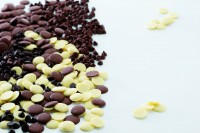
Back to School Health Tips
by Christine Bailey This article has been cross-posted from www.christinebailey.co.uk. Start the new school term


by Christine Bailey This article has been cross-posted from www.christinebailey.co.uk. Start the new school term

– Extract from Chocolate by Jennifer Donovan. Cocoa beans, from which chocolate is derived, are

Watkins Media Limited
Shepperton House unit 11
89 Shepperton Road
London, England
N1 3DF

Watkins Media Limited
Shepperton House unit 11
89 Shepperton Road
London, England
N1 3DF